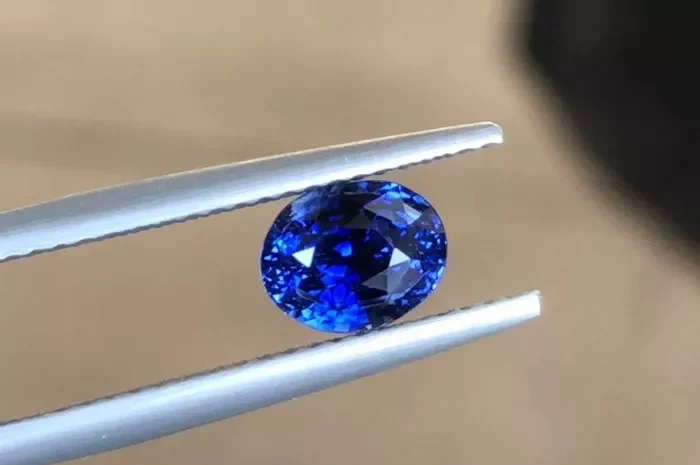Jewelry appraisal is a field that combines artistic aesthetics with scientific precision. It involves a thorough understanding of gemstone properties, market trends, and consumer preferences. Among the myriad of gemstones available, sapphires have always held a special place, especially due to their hardness, durability, and the variety of colors they exhibit. Yellow sapphires, in particular, have garnered significant attention due to their warm, inviting hues that complement a wide range of jewelry designs.
Introduction to Synthetic Yellow Sapphires
Synthetic yellow sapphires are gemstones that are created in a laboratory environment, mimicking the chemical and physical properties of natural sapphires. The process typically involves heating aluminum oxide (Al₂O₃) to extremely high temperatures and pressures, often in the presence of trace elements that give the sapphire its color. Synthetic sapphires have been around for decades and have undergone significant advancements in technology, making them increasingly indistinguishable from natural stones in terms of appearance.
Market Trends and Consumer Preferences
The market for synthetic yellow sapphires has seen a notable surge in recent years, driven by several factors. Firstly, the rising demand for colored gemstones, particularly yellow sapphires, has outpaced the supply of natural stones. Natural yellow sapphires are relatively rare and often come with a higher price tag, making them inaccessible to a broader audience. Synthetic sapphires, on the other hand, offer a more affordable alternative that retains the aesthetic appeal of natural stones.
Secondly, advancements in synthetic gemstone technology have led to the production of stones with exceptional clarity, color saturation, and cut. These improvements have made synthetic sapphires more appealing to consumers who prioritize aesthetics over origin. Many consumers are now willing to opt for synthetic stones, especially when they are difficult to distinguish from natural ones with the naked eye.
Color Stability and Durability
One of the key factors influencing the market acceptance of synthetic yellow sapphires is their color stability. Natural sapphires can undergo color changes due to exposure to heat, light, or chemicals. Synthetic sapphires, however, are often more stable in color, retaining their vibrant hues over time. This stability is particularly advantageous in jewelry pieces that are worn frequently and exposed to various environmental conditions.
Moreover, synthetic sapphires are known for their durability. They share the same hardness and toughness as natural sapphires, making them resistant to scratches and wear. This durability is crucial for jewelry that is intended for everyday wear, ensuring that the gemstone retains its beauty and value over the years.
Ethical Considerations
The market for synthetic yellow sapphires has also been influenced by ethical considerations. The mining of natural gemstones often comes with environmental and social costs, including deforestation, land degradation, and labor exploitation. Synthetic sapphires provide a more sustainable option, as they are produced in controlled environments with minimal environmental impact. This ethical dimension has resonated with consumers who are increasingly conscious of their environmental footprint and seek to make responsible purchasing decisions.
Industry Developments and Innovations
The jewelry industry has responded to the growing demand for synthetic yellow sapphires by investing in research and development. Manufacturers have refined their production processes, resulting in gemstones that are not only visually indistinguishable from natural ones but also exhibit superior physical properties. Innovations in cutting and polishing techniques have further enhanced the aesthetic appeal of synthetic sapphires, making them highly competitive in the market.
Consumer Education and Transparency
To foster market acceptance, it is crucial for jewelers and manufacturers to educate consumers about the benefits and properties of synthetic yellow sapphires. Transparency in labeling and disclosure is essential to build trust with consumers and ensure that they make informed purchasing decisions. Providing detailed information about the origin, production process, and quality characteristics of synthetic sapphires can help dispel misconceptions and promote their adoption.
Future Prospects
The future of synthetic yellow sapphires in the jewelry market looks promising. As consumer awareness and acceptance continue to grow, synthetic stones are likely to become more mainstream. Innovations in gemstone technology will further blur the line between synthetic and natural sapphires, making it increasingly difficult for even trained professionals to distinguish between them.
Moreover, the trend towards sustainable and ethical consumption is likely to accelerate, driving demand for synthetic gemstones. As consumers become more informed and concerned about the environmental and social impacts of their purchases, synthetic sapphires will emerge as a viable and attractive alternative to natural stones.
conclusion
In conclusion, the market acceptance of synthetic yellow sapphires is driven by a combination of factors, including affordability, aesthetic appeal, color stability, durability, ethical considerations, and industry innovations. As the jewelry industry continues to evolve, synthetic sapphires are poised to play an increasingly significant role in meeting consumer demands and shaping the future of gemstone jewelry.
Related topic:
- Yellow Sapphire Originality Test: What Are the Standard Test Methods?
- Yellow Sapphires or Canary Diamonds: Which Is Rarer?
- How to Check the Purity of Yellow Sapphire?


